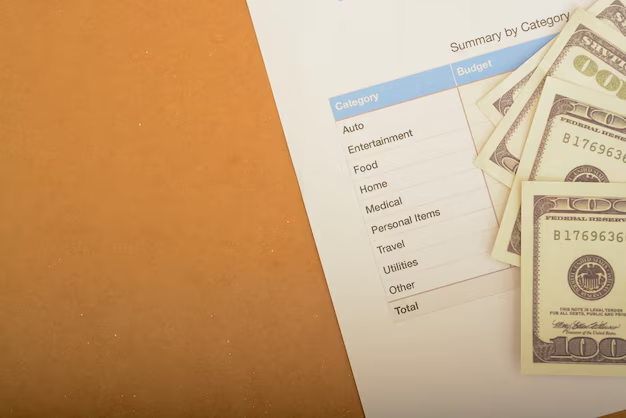How Much Should You Really Put in Your HYSA Account? A Practical Guide to Using a Savings Calculator
In today's volatile financial climate, finding a safe and rewarding place to store your cash might feel overwhelming. For many, a High-Yield Savings Account (HYSA) offers an attractive balance of accessible cash and higher interest rates than a standard savings account. But if you've found yourself pondering, "How much should I put in my HYSA?"—you're not alone. Let's explore how to use a HYSA account calculator effectively to maximize your savings strategy.
🔍 Understanding the Purpose of an HYSA
Before diving into the numbers, it’s crucial to understand what a High-Yield Savings Account is and how it fits into your broader financial plan. HYSAs are designed to offer higher interest rates than standard savings accounts, making them ideal for parking cash that you want to remain liquid yet grow meaningfully.
Why Choose an HYSA?
- Liquidity and Accessibility: HYSAs typically offer easy access to your funds, often allowing a limited number of transactions per month.
- Interest Accumulation: The interest rates are frequently better than those offered by traditional checking or savings accounts, providing a higher return on your liquid assets.
- Security: Most HYSAs are FDIC-insured, meaning your deposits up to $250,000 are protected.
Common Uses for HYSAs
- Emergency funds
- Short-term savings goals
- An alternative to checking accounts for income earning
🧮 How Much to Allocate: Using a HYSA Calculator
Deciding how much money to keep in an HYSA isn't a one-size-fits-all decision. It depends on personal financial circumstances and goals. Here's how to leverage a savings calculator to sharpen your strategy.
Calculating the Ideal Savings Amount
A HYSA calculator helps you determine potential interest earnings based on:
- Initial Deposit: This is the amount you initially deposit into your HYSA.
- Monthly Contributions: Regular, additional monthly deposits that grow over time.
- Interest Rate: This is the annual percentage yield offered by your bank or financial institution.
Tip: Regularly updating your calculator inputs to reflect changes in interest rates or contributions helps keep your savings plan on track.
Planning Scenarios to Consider
- Emergency Fund: Financial advisors often recommend setting aside three to six months' worth of living expenses.
- Short-term Goals: Whether it’s a vacation or home renovation, matching your savings to planned expenses over a short-term horizon is key.
- Income Buffering: Use it to manage cash flow more efficiently as opposed to using it purely as a savings vehicle.
📊 Factors Influencing How Much to Save
When calculating your ideal savings, consider various factors that might influence your decision, including:
Personal Income and Expenses
- Budgeting: Calculate fixed monthly expenses like rent, utilities, and groceries to understand how much you can safely divert into savings.
- Variable Expenses: These can include dining out, entertainment, or travel. They often fluctuate but should still be accounted for in planning periodic contributions to your HYSA.
Current Financial Commitments
- Debt Management: Balancing savings with paying off high-interest debt should be a priority. Paying down debt can sometimes offer a better 'return' than low-yield savings.
- Investment Portfolio: Consider whether your HYSA complements a diversified strategy involving stocks, retirement accounts, or other investment vehicles.
Long-term Financial Goals
- Retirement Planning: While HYSAs are excellent short-term savings solutions, they differ greatly from long-term retirement saving strategies.
- Major Life Events: Savings needs can increase with plans for marriage, starting a family, or purchasing a home.
📚 Navigating Related Financial Concepts
Understanding how much to save in an HYSA is part of broader financial literacy. Here are subtopics worth exploring:
Compound Interest: Leveraging Time
Compound interest is a vital concept in understanding how HYSAs can contribute to your financial growth. The longer funds sit in your HYSA, the more they benefit from compound interest:
- Compounding Frequency: Daily, monthly, or quarterly compounding affects how quickly your savings grow.
Savings vs. Investing: The Right Balance
A balanced approach to savings and investments ensures financial resilience. Here are key considerations:
- Risk Tolerance: Understand how much risk you're comfortable taking relative to your financial goals.
- Diversification: Avoid concentrating all your financial reserves in one type of account to manage risk better.
Emergency Savings: Building Resilience
Maintaining an emergency fund remains a fundamental financial strategy. Here's why:
- Unforeseen Circumstances: Job loss, medical emergencies, or sudden repairs make having a safety net imperative.
- Peace of Mind: Knowing you have quick access to funds brings psychological comfort and stability.
🔑 Quick Reference: How to Determine Your HYSA Contributions
Here is a strategic bullet list to guide your HYSA planning:
- ✈️ Assess Financial Goals: Short vs. long-term needs.
- 💰 Budget Effectively: Determine safe, periodic contribution levels.
- 📈 Utilize Calculators: Accurately project growth and align savings with goals.
- 💥 Plan for Emergencies: Prioritize building and maintaining a safety net.
- ⚖️ Balancing Act: Juggle saving, investing, and debt repayment priorities.
🌟 Empower Your Financial Future
An HYSA can be a powerful tool in your savings arsenal, but only if used wisely. Calculating and adjusting the amount you deposit helps ensure you’re not just parking cash, but leveraging it optimally to meet both immediate and long-term goals. The right balance between emergency funds, planned expenses, and investment potential could mean the difference between financial peace and stress.
Remember to revisit your savings strategy regularly, as life and financial circumstances inevitably change. As you build these habits, you'll cultivate a proactive approach to financial management that can have lasting benefits for your economic well-being.

Related Topics
- a High Yield Savings Account
- a High-yield Savings Account Amercian First Credit Union
- Are High Yield Savings Accounts Fdic Insured
- Are High Yield Savings Accounts Safe
- Are High Yield Savings Accounts Taxed
- Are High Yield Savings Accounts Worth It
- Are Hysa Taxed
- Are Hysa Worth It
- Can You Lose Money In a High Yield Savings Account
- Can You Take Money Out Of High Yield Savings Account